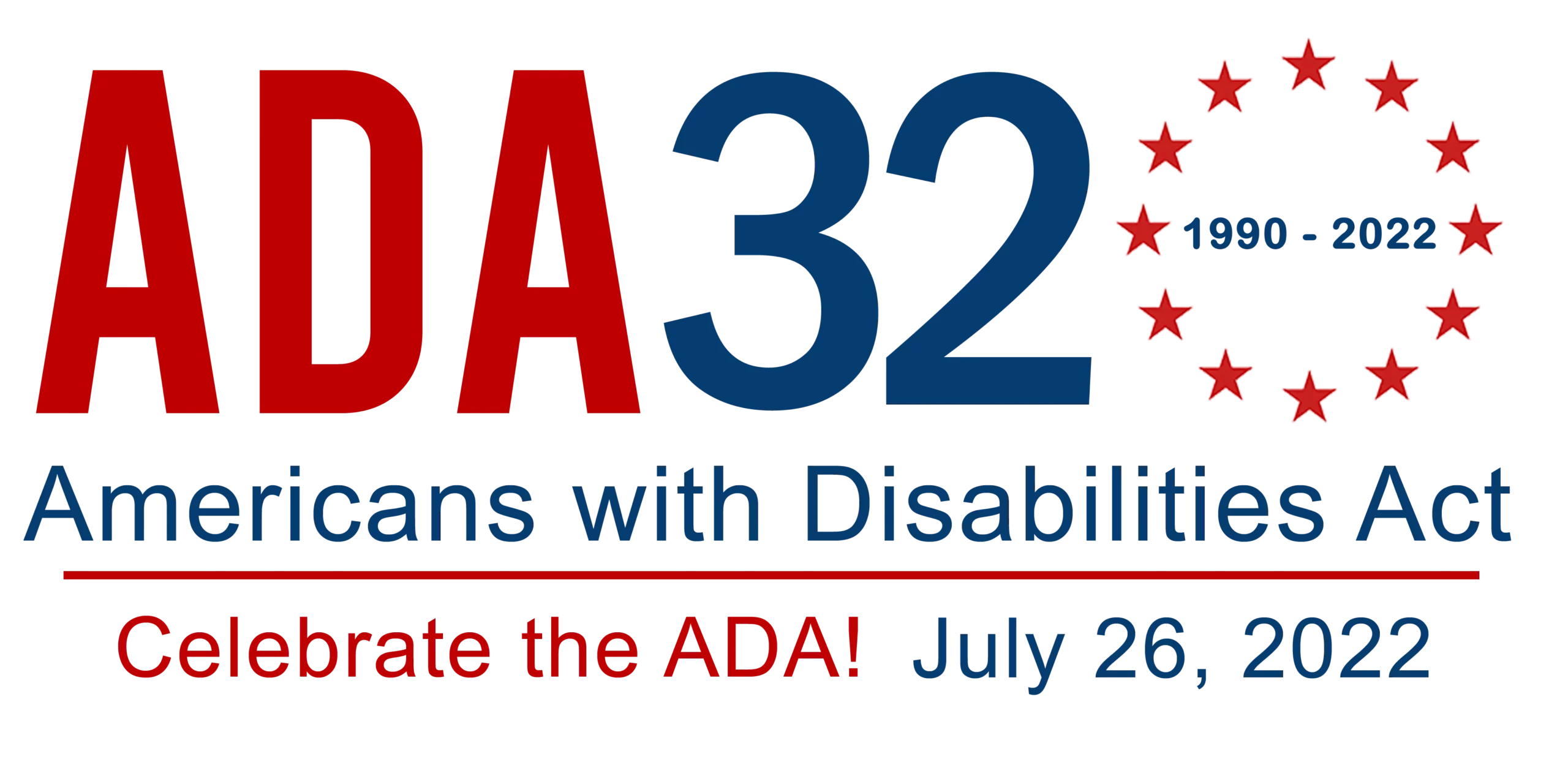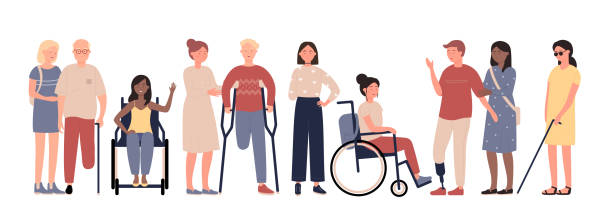July 26 commemorates the anniversary of the signing of the Americans with Disabilities Act. The history leading to the monumental piece of legislation is voluminous in its own right. It was out of bravery and resilience that made barriers fall and, once removed, we continue to benefit from its effects. When allotting resources, we can pass beyond a scarcity mindset and step into a language surrounding access, which in turn continues to help more people in everyday life.
 Credit: ADA National Network (adata.org) 1-800-949-4232
Credit: ADA National Network (adata.org) 1-800-949-4232
The Americans with Disabilities Act (ADA) is a federal civil rights law that was enacted in 1990 to protect individuals with disabilities from discrimination by employers, state and local government, and public-serving entities. This includes jobs, schools, transportation and all public and private places that are open to the general public, such as restaurants and movie theaters. The legislation changed the way citizens with disabilities in this country wanted fellow Americans to understand their problems — not as issues of health but as one of civil rights. The New York Times called the law at the time “the most sweeping anti-discrimination measure since the Civil Rights Act of 1964.”
One major part of this landmark legislative history takes us to a 1960s summer camp – Camp Jened. Founded in 1951 it provided a summer getaway for people with disabilities and also became a key factor in the American Disability Rights Movement. There, campers saw the possibilities in how they could participate in civic life when, as American citizens, they were aptly given equal rights. They saw the need for changing the way America viewed disabilities and how it instead needed to provide access to inclusion for all. Experiences and political interests aligned. Combined with the desire for equal opportunities and equal rights, the focus on a vision of inclusion and accommodation emerged as a movement. This group of activists demanded accommodations as part of their identity rather than meeting barriers to any impairment.
This place of inclusion and community led to one of the civil rights provisions of the Rehabilitation Act of 1973, marking for the first time that exclusion and segregation of persons with disabilities is in fact, discrimination. As a major piece of federal legislation surrounding accessibility, Section 504 text of the Rehabilitation Act of 1973 provides: “No otherwise qualified handicapped individual in the United States shall solely on the basis of his handicap, be excluded from the participation, be denied the benefits of, or be subjected to discrimination under any program or activity receiving federal financial assistance.” In other words, if an organization receives federal support of any kind (government offices, schools, universities, hospitals, post offices), even if the organization is not a federal or state organization, the organization must not discriminate against someone because of a disability.
 It is worthwhile noting that due in part to a lack oversight and of design standards for accessibility, a provision in the Rehabilitation Act of 1973 (section 502) created the Access Board, originally named the Architectural and Transportation Barriers Compliance Board. The Board is a critical piece of ensuring that federal buildings are indeed accessible.
It is worthwhile noting that due in part to a lack oversight and of design standards for accessibility, a provision in the Rehabilitation Act of 1973 (section 502) created the Access Board, originally named the Architectural and Transportation Barriers Compliance Board. The Board is a critical piece of ensuring that federal buildings are indeed accessible.
The passage of the Education for All Handicapped Children Act in 1975 mandated the inclusion of children with disabilities in schools. This act required all public schools accepting federal funds to provide equal access to education and one free meal a day for children with physical and mental disabilities.
As these laws fell within the realm of Health, Education, and Welfare (HEW), they needed to implement them. Because of failure to enforce the law, intensity of activism and protests ramped up. On April 5, 1977, demonstrators countrywide, held protests outside local offices. One of the sit-ins lasted a total of 25 days, with more than 150 people refusing to leave. It is the longest sit-in at a federal building to date.
The ADA was presented in 1988 and passed in the senate in 1989. On March 3, 1990 the extraordinary efforts of over 1,000 marchers from the White House to the Capital demanded passage of the ADA. A physical demonstration of more than 60 people abandoned their mobility devices to crawl up the 89 steps to the U.S. Capital (they called it the “Capital Crawl”). The bill was signed that summer. When the Americans with Disabilities Act (ADA) was signed into law over 30 years ago, it was the culmination of decades of activism, sacrifice and struggle by people with disabilities to protect basic rights long denied.
Other countries followed suit after this proud American moment. In the years after enactment of the ADA in the United States and similar laws internationally, people with disabilities and governments around the world began meeting and discussing an international treaty that would require other countries to protect the rights of people with disabilities.
Thinking about access issues in planning processes also has ripple effects that may otherwise be overlooked. For example, many of us benefit from curb cuts on sidewalks – people with strollers, bikes, etc. Automatic doors benefit people with lots to carry. The mindset of inclusion helps all and there are still many ways we can work toward disability justice. In our daily lives, if we think about our experiences with technology, architecture, employment, education, etc. and challenge ourselves to identify possible improvements, even small acts to make accommodations for all can advance our efforts of inclusion and access.
Celebrate with each other and share the Americans with Disabilities Act (ADA) in your workplaces, schools and communities throughout the year and for the ADA Anniversary (July 26).
 Credit: ADA National Network (adata.org) 1-800-949-4232
Credit: ADA National Network (adata.org) 1-800-949-4232
Below you'll find merely a small list of resources to learn about this extraordinary act.
https://www.ada.gov/ada_intro.htm
https://en.wikipedia.org/wiki/National_Council_on_Disability
https://www2.ed.gov/about/offices/list/ocr/504faq.html
https://adapt.org/we-will-ride-the-gang-of-19/
https://adata.org/learn-about-ada
https://adata.org/factsheet/ADANN-writing




